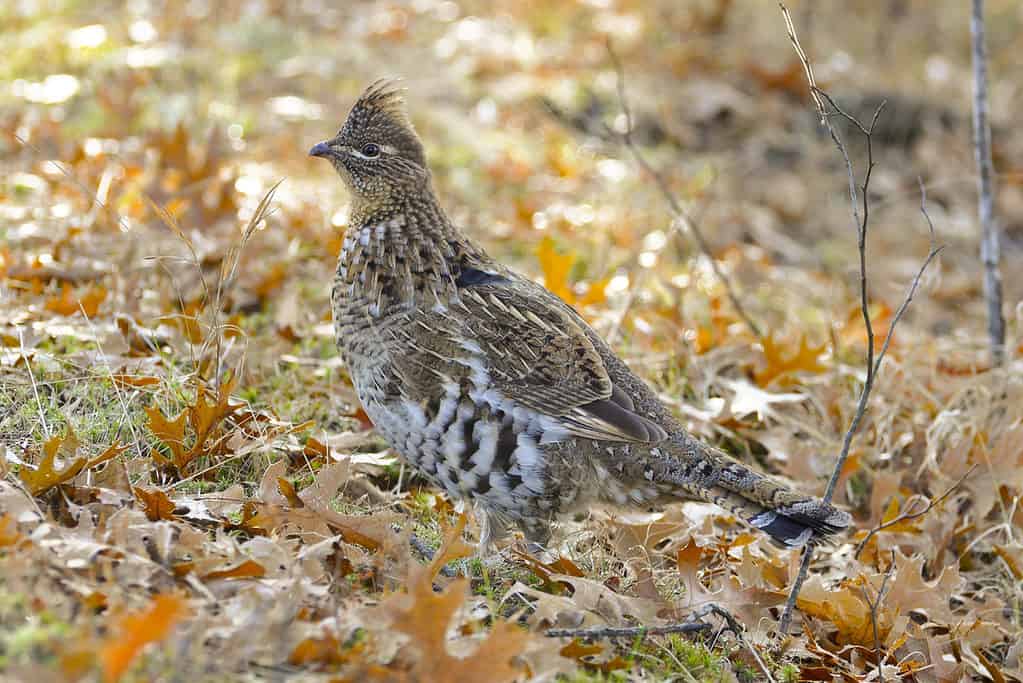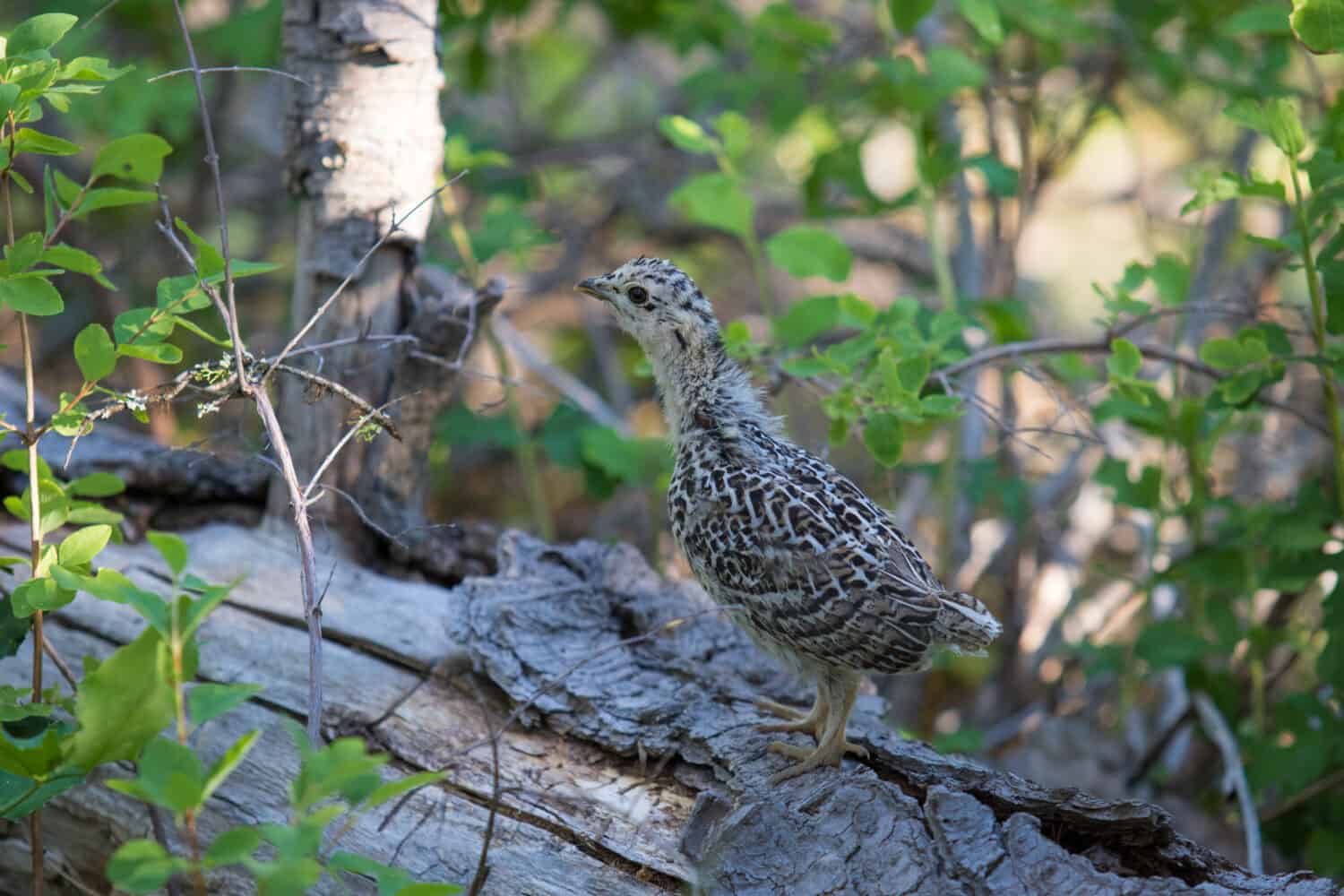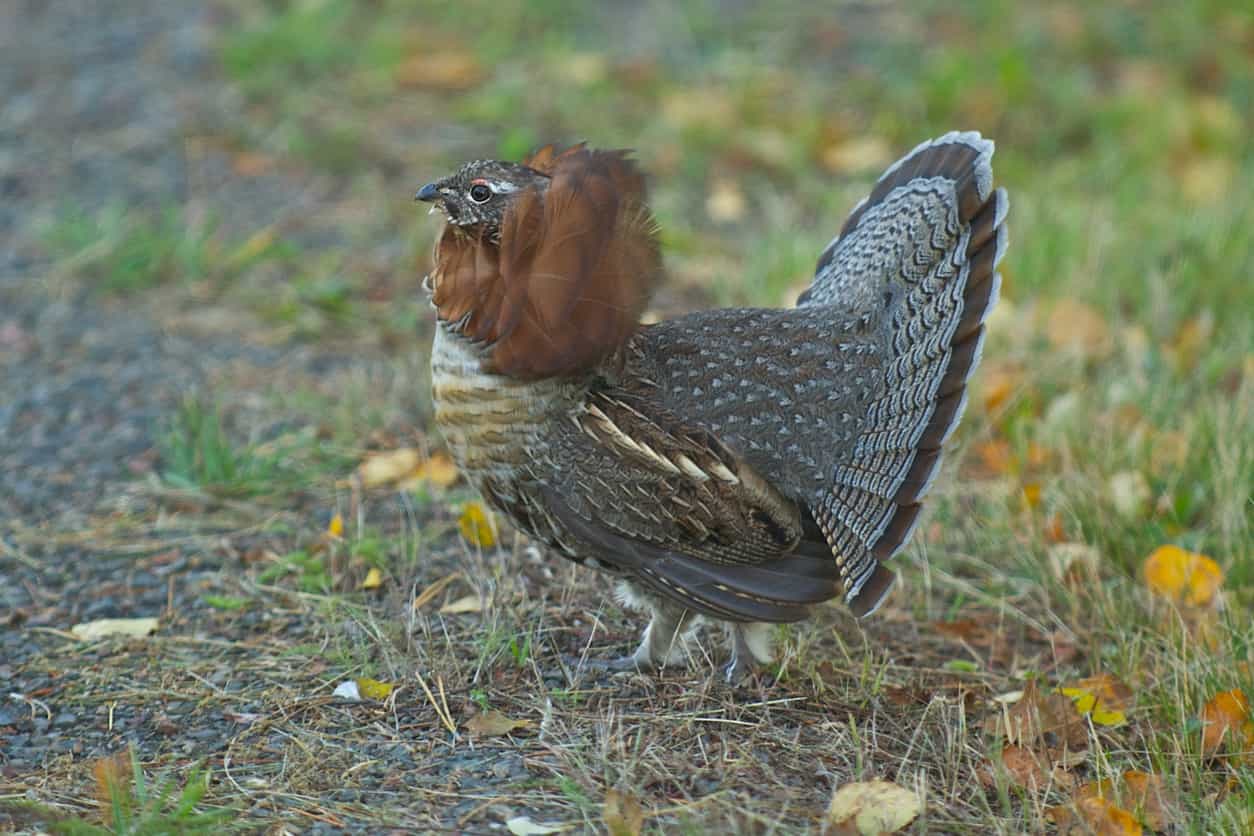The state bird of Pennsylvania is the ruffed grouse (Bonasa umbellus), which received its title in 1931 owing to its importance as a food source to early colonizers. It is hunted yearly and regarded as an important game bird even today. Some hunters even refer to the species as the King of the Game Birds.
But the ruffed grouse is much more than just a source of food for humans. In this article, we’ll put the spotlight on this special bird. We’ll find out how to identify it, as well as what it eats and where it lives. We’ll also look at its unique territorial call that is a familiar sound in Pennsylvania forests all year long.
What Does the Ruffed Grouse Look Like?
Ruffed grouse are stout, mid-sized birds that are similar in size to the American crow. Adults often measure about 17 inches tall when standing and have a wingspan of about 24 inches. They are short-legged and have a pointed crest of feathers atop their heads. Their long, fan-shaped tails feature a distinct black band toward the outer edge. Female tail bands often have a gap in the center while the bands of males are usually continuous. This isn’t a hard rule, however, and variations between sexes occur.
Both males and females of the species produce feathers in a range of colors and patterns that help them blend into their surroundings. They are grayish- or reddish-brown, or tawny overall, with lighter coloration on their undersides. The irregular spots, bars, and other markings that appear throughout their plumage help break up their coloration and trick the eyes of potential predators. This irregularity and high contrast is known as disruptive coloration and is a very effective means of camouflage.
While they aren’t flashy in terms of their overall coloration, ruffed grouse have a flashy trait from which they derive their common name. Each bird has a set of dark brown or black neck feathers that it can fan out to create a distinct ruff. While both male and female grouse have these feathers, the males will flare them out during their mating displays or when defending their territory.

Ruffed grouse have highly contrasting markings throughout their plumage. This is called disruptive coloration and helps break up their outline and obscure their shape against the forest floor to protect them from predators.
©iStock.com/SteveOehlenschlager

Mating Behavior
Though the birds are well-camouflaged, their loud mating displays often give them away. Unlike most birds, however, their courting ritual involves no vocalizations. When courtship begins, males will seek out a suitable log, rock, mound of earth, or other high point. Once they have decided on a location, they will brace themselves upright using their tails, present their ruffs, and use their wings to create a thumping sound. While it may appear that they are drumming on their sides, they are disturbing the air fast enough to create a small vacuum. As the vacuum collapses beneath the bird’s wings, it creates the familiar drumming sound that projects through the forest.
The drumming starts slow and increases in frequency over several seconds. It is quite loud, usually audible up to a quarter-mile away, and males will sometimes perform for hours in search of mates. Male grouse are also quite territorial and use their drumming to warn other males of their presence. They often claim large tracts of forest, usually 6 to 10 acres in size.
The video below shows a male grouse hard at work on his drumming log.
What Does It Eat?
The state bird of Pennsylvania has a pretty varied diet that changes from season to season. Young birds are extremely dependent on insects to supply them with the proteins, fats, and other nutrients that are vital for early development. As they age, their reliance on insect prey decreases. Instead, they will feed primarily on seeds, fruits, and the tender new buds of many plant species. Which of these they prioritize depends on seasonal availability. During the spring and summer, they rely mostly on fruits and berries. Acorns and other nuts are an important and nutrient-dense food source throughout the fall. During the winter, ruffed grouse will subsist on twigs, buds, catkins, and any remaining seeds they can find.

Ruffed grouse chicks rely almost entirely on insects to supply them with the high levels of protein and fat necessary for early development. While they still feed on insects into adulthood, their focus shifts towards plant-based foods.
©David DeFillipo/Shutterstock.com
Where to Find the Pennsylvania State Bird
Ruffed grouse thrive in a variety of woodland environments. They prefer those with clearings and plenty of undergrowth that provide them with a variety of fruits and seeds to feed on. They will also take to thickets and overgrown pastures that afford them plenty of food and cover. They are not migratory birds and remain in Pennsylvania year-round.
Overall, the ruffed grouse is a pretty common occurrence. They appear in suitable habitats all across the state. As of late, however, their populations have been in decline. The young birds are particularly susceptible to West Nile virus, which spreads via bites from mosquitoes. The disease has become more prevalent in the state in recent years.
Climate change has also been a factor in their decline. Ruffed grouse begin to lay their eggs in the late winter and early spring, relying on cool weather early on to keep mosquitoes at bay. Because spring weather has been warmer and wetter lately, the virus has been able to spread more easily. Longer summers and shorter winters also mean that mosquitoes continue to breed for longer throughout the year.
Observations by the Audubon Society and many local bird watchers also show that the bird’s native range is shifting due to climate change. The state bird of Pennsylvania may one day leave the state entirely in search of cooler climes. If global warming trends continue at the current rate, the ruffed grouse is likely to lose the entirety of its habitat in the United States. Global temperature increases of about 2° Celsius could shift their range as far north as Northern Canada. At a 3° change, the bird would lose more than half of its current range. If things don’t change, the bird may be pushed to the brink of extinction.
Thank you for reading! Have some feedback for us? Contact the AZ Animals editorial team.








